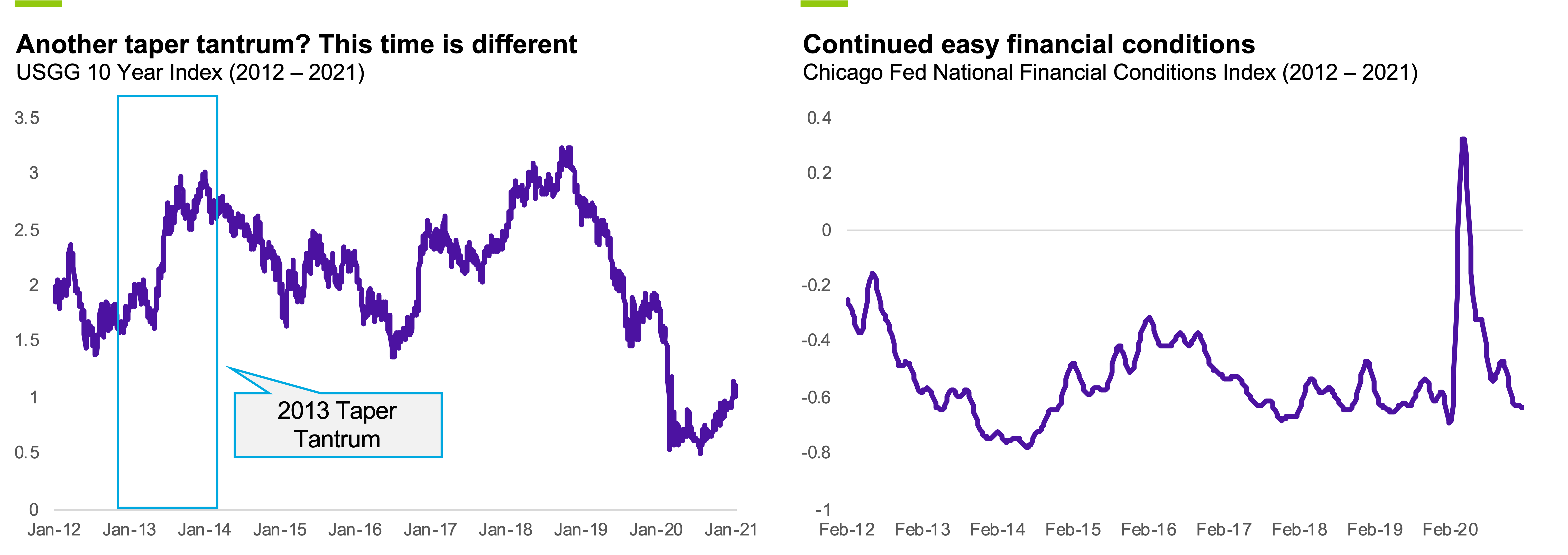Markets are not constant. They are about change, and shaped via the expectations around speed and direction of that change. An extraordinarily accommodative monetary policy, on the other hand, is all about preserving and signaling status-quo with clarity. Since the onset of the pandemic, the U.S. Federal Reserve (“Fed”) has epitomized a “whatever it takes” stance by holding near-term yields at rock bottom and introducing massive open market operations, including monthly purchases of $80 billion in Treasuries and $40 billion in mortgage-backed securities. However, recent noise around a spike in long-term yields, inflationary concerns and, most recently, extreme froth and liquidity in certain corners of equity markets has heightened the need for the Fed Chairman Powell to deliver a committed and clear message.
And Fed Chair Jerome Powell did not disappoint.
Listening to the market’s urgent plea, he reassured that there will be no change to keeping the Fed’s benchmark interest rates near zero. Additionally, the Fed will continue purchasing $120 billion in bonds on a monthly basis until “substantial further progress” on employment and inflation is made; acknowledging that it is open to using all available tools to support an economy whose recovery is moderating and dependent on virus effects and vaccine dissemination. We view this unanimous decision as positive in the Fed’s ability to manage communication risk in a new regime –with Democrats controlling the Congress, Senate and White House – and as monetary policy passes the baton over to fiscal stimuli. Importantly, the Fed’s messaging avoided the perception of “tapering,” thus reducing the likelihood of an inadvertent 2013 Taper Tantrum-esque selloff in longer-dated U.S. government debt.Which in turn would escalate duration risk and induce repricing of financial assets.
It’s also important to note that Fed Chair Powell has pointedly quelled any speculation of an early end to bond purchases this year, emphasizing that “now is not the time to talk about exit.”
We view this continued commitment by the Fed on easy financial conditions as alleviating a potential risk to equity valuations and duration risk for fixed income, while patiently allowing time for outcome-based goals of maximum employment and inflation to rise and persist at its long-term average goal of 2%. The Fed’s policy affirms Emles’ view that investors’ search for yield and uncorrelated, total return assets will continue – particularly those that can survive bouts of volatility and/or attach themselves to secular policy tailwinds of “Buy American” and the structural shift to a technology-enabled society.

Source: Bloomberg, as of January 27, 2021. Information is subject to change and is not a guarantee of future results.
Tags: Inflation, Interest rates, Volatility